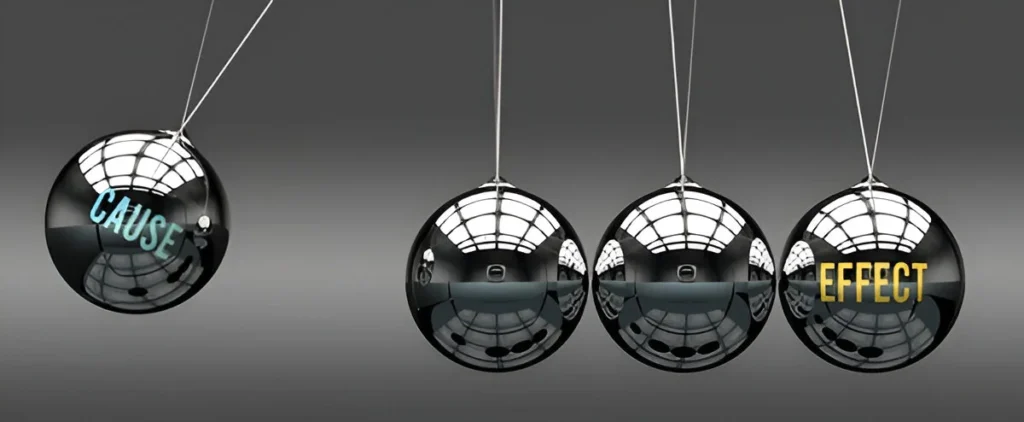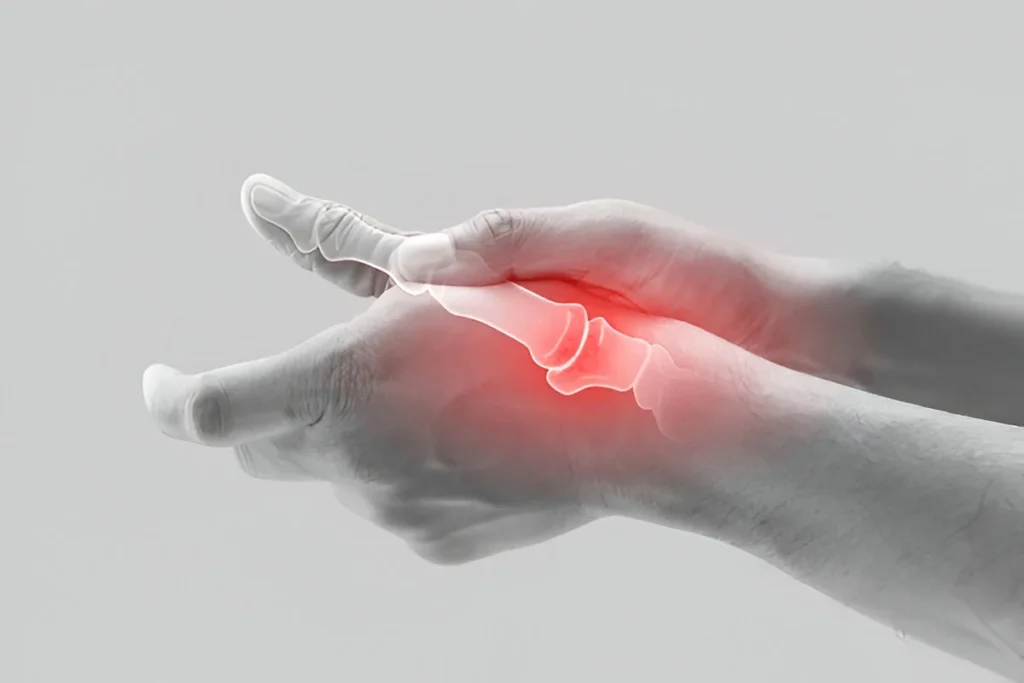The most common musculoskeletal and sports overuse injuries are tendon and stress fractures. In order to make the right diagnosis and treatment, we must learn the difference between Stress Fracture vs. Tendonitis. This is a full article on all these things with examples of the definitions and symptoms, causes, diagnosis and treatment options. We will also answer some frequently asked questions about these conditions.
What is a Stress Fracture?

A stress fracture is a crack anywhere from dimesnions to pits in a bone from overused repeated use. Stress fractures can take place on a single traumatic occasion. They are technically present in most weight-bearing bones, including tibia (shin splints bone), metatarsal bones (foot bones and lower leg), and femur (thigh bone).
What Causes Stress Fractures?
Stress fractures often result from a combination of factors, including:

Overtraining
Running too much a little bit helps your body to adjust to all of that extra stress.
Flat Feet
Flat-foot people also have an uneven weight distribution and a higher risk of stress fracture.
Improper Footwear
Other people who run and develop stress fractures include those who wear shoes that don’t provide enough support. But running in worn-out shoes on the affected foot will be worse.
Repetitive Stress
Repeated activity can wear down the bone again and again until, eventually, the bone cracks up into little pieces, usually the bones of your metatarsals.
Bone Density Issues
If you have weaker bones, such as osteoporosis or another condition, this stress fracture, the most common cause in your lower extremities, is more likely to occur as it can throw your bone density back out of wack.
Vitamin D Deficiency
Where proper vitamin D isn’t available, you can develop weak bones and broken bones (fractures).
Military Recruits
A major cause of stress fractures among new recruits is increased physical activity.
Symptoms of Stress Fractures
Common symptoms of stress fractures include:

- Localized Pain: Pain worsened by weight-bearing (or standing, or standing up) and improved with rest is a hallmark symptom. It’s sometimes mild and then worse.
- Swelling: You will now find it is tender to the touch, and it can swell up the affected area around you.
- Bruising: Soon, it can cause bruising if the injury is aggravated.
- Difficulty Weight-Bearing: As the condition advances, more and more people will become too much in pain of weight above the affected limb.
Stress Fracture Common Places

- Medial Tibial Stress Syndrome: Tibial stress fractures are found most often in people who run or athletes who play a game that normally involves a high impact.
- Heel Bone: Athletes with jumping sports are prone to stress fractures of the calcaneus, and it is, therefore, very important to identify and treat these patients.
- Metatarsal Stress Fractures: A stress fracture of your fifth metatarsal is possible but typically seen with a big acute rolling or jostling of your ankle.
What is Tendonitis?

Tendonitis is defined as the inflammation of a strong, fibrous tissue that acts as a connector between muscles and bones, commonly known as the cord.
Thickening occurs due to inflammation, and since tendons are painful when inflamed, a patient cannot easily use a particular limb or move a particular joint.
Causes of Tendonitis

Repetitive Motion
Doing sports or any other activity that involves repetitive movements (canvas painting or typing, for instance) inflames your tendon.
Aging
Tendonitis is more common in older adults because extensor tendons become less flexible and easier to injure as we age.
Improper Technique
The risk for tendonitis (or tendinitis) rises up as it does for a stress fracture if you do any exercise incorrectly.
Underlying Conditions
Some medical conditions that can bring on tendonitis include things like diabetes and rheumatoid arthritis.
Sudden Increase in Activity
Physical activity (weight-bearing activities) within children can change quickly. This quickly stresses the tendons, and they can become inflamed.
Symptoms of Tendonitis

Symptoms typically include:
- Pain and Tenderness: The pain is almost always limited to the affected extensor tendons and is made worse by movement. It is an aching pain.
- Swelling: It may be swollen or thickened (palpable or visible swelling or thickening of the tendon).
- Stiffness: And the thing is, it’s stiff, really, even more so in the morning or after long bouts of inactivity. It can restrict ranges of motion as well.
- Crepitus: You may hear or feel a grating sensation or sound if you’re moving your affected joint.
Stress fracture vs. Tendonitis: Key differences
Both stress fractures and tendinitis are caused by repetition of activity; however, the structure is different and will present different symptoms.

Location of Pain
- Stress Fracture: Pain, worse with weight-bearing activities, is present in the bone. There may be either sharp, specific pain at the point of the fracture or diffuse pain.
- Tendonitis: The pain is in a tendon, or often near it and makes it worse when you move. It will sometimes appear more diffuse and can spread onto neighbouring sites.
Nature of Injury
- Stress Fracture: A small crack in the bone can get more complicated until you get it fixed. Tiny cracks ultimately develop over time, caused by the bone’s repetitive force and stress reactions.
- Tendonitis: The inflammation of the tendon cannot be solved on its own.
Diagnosis
- Stress Fracture: X-rays can detect stress fractures, but not always – unless it’s far advanced. If the problem has already begun, doctors would have gone by an MRI or bone scan to pick up on changes in the structure of your bone that might be too small for them to see if the problem has started.
- Tendonitis: Ultrasound can show your tendon and how much inflammation is going on in it. Throughout a physical examination, you may experience sensitivity and inflammation as well.
Treatment Options

Treatment of Stress Fractures
Rest
Healing requires weight bearing to be stopped. This depends on where your injury is and how serious it is: you might need weeks or even months.
Ice Therapy
This can aid in reducing the swelling and the pain. So ice will be applied several times per Day for 15–20 minutes.
Compression and Elevation
Elevating the injured area, or compression wraps, can help the body heal since it helps decrease swelling.
Physical Therapy
Once they are healed, we can strengthen and flexibility exercises to help prevent future overuse injuries.
Activity Modification
You can adopt other training methods that soothe your injury.
Surgery
Fine cases or those not responding to conservative treatment may demand stabilization or treatment of the fracture or any damage by surgery.
Treatment for Tendonitis

Rest
It’s important with the tendon as it is with stress fractures and just as important.You refrain from introducing additional activities to exacerbate the discomfort.
Ice Therapy
Pain and swelling may be treated by using ice packs. To really let it work its magic, applying ice right afterwards is very effective.
Anti-inflammatory Medications
Pain and inflammation complaints can be helped over-the-counter medications (ibuprofen or naproxen). Finally, if you in any other way take medication, you need to speak with a healthcare provider first.
Physical Therapy
These exercises will restore function and prevent recurrence. Physical therapists can teach about proper techniques to avoid tendonits.
Corticosteroid Injections
Sometimes it is reduced by injections. Although they should be handled carefully because repeated injections can damage the tendon, they aren’t given any.
Preventive Measures

Preventing Stress Fractures
- Gradual Training: Basically, wax the intensity and duration of the exercise gradually so that the body adjusts.
- Cross-Training: Low-impact activities can help add ways to reduce the strain on certain bones when repeatedly stressed the same bones.
- Proper Footwear: If you are active enough, make sure the shoes you buy put enough support and cushioning into them.
- Nutrition: Too much calcium does not prevent or treat bone loss beyond real amounts. A balanced diet with nutrients that help keep your skeleton strong will help you keep bone density.
Preventing Tendonitis
- Warm-Up and Cool-Down: During your daily routine, you have warm-up and cool-down exercises to help your tendons prepare for what you are about to take on.
- Strength Training: Generally, ultimately, building those muscles around the joint, the tendon, can help decrease the potential for injury.
- Ergonomics: Ergonomics on your premises should be something made to reduce the strain on tendons if you have people doing repetitive jobs. This can mean changing workstations or using implements designed to minimize stress.
- Listen to Your Body: Don’t carry on past pain signals. Early intervention will stop more serious injuries.
Stress Fractures vs. Tendonitis Comparison
| Feature | Stress Fracture | Tendonitis |
|---|---|---|
| Definition | A small crack in a bone caused by repetitive stress | Inflammation of a tendon, often caused by overuse |
| Location of Pain | Bone | Tendon |
| Nature of Pain | Sharp, localized pain, often worse with weight-bearing activities | Aching pain, often worse with movement |
| Common Causes | Overtraining, improper footwear, poor biomechanics, underlying conditions (like osteoporosis) | Repetitive motion, overuse, poor technique, underlying conditions (like rheumatoid arthritis) |
| Diagnosis | X-rays, MRI, or bone scan | Physical exam, ultrasound, or MRI |
| Treatment | Rest, ice, compression, elevation (RICE), physical therapy, in some cases, surgery | Rest, ice, compression, elevation (RICE), physical therapy, anti-inflammatory medication, corticosteroid injections in severe cases |
| Prevention | Gradual increase in activity, proper footwear, strength training, cross-training | Gradual increase in activity, proper technique, rest, ice, compression, elevation (RICE), stretching, strengthening exercises |
FAQs about stress fracture vs. tendonitis

Q1. Can a stress fracture be in the same place as tendonitis?
In fact, you can have both conditions simultaneously, especially in female athletes with a history of high-impact activity. In addition to the stress placed on the bone causing a fracture, inflammation in the surrounding tendons is also caused.
Q2. Is a stress fracture recoverable?
The recovery from a stress fracture typically takes 6 to 8 weeks, depending on how severe and strong you are and the athlete. Some factors, such as age and nutrition, may influence the period between symptoms and recovery time.
Q3. Is tendonitis really a big issue?
This is painful and limiting but isn’t serious. However, it doesn’t get better in most cases and can lead to continued injury and even tendinosis or tendon tears.
Q4. Are stress fractures possible to prevent?
Certainly, there is enough prevention of stress fractures with proper training techniques, adequate rest, and proper shoes. Tracking training loads and training the workout routine was balanced.
Q5. When I have these conditions, what should I do?
Seeking treatment by your healthcare professional will be appropriate if you continue to have persistent pain, swelling, or difficulty moving the area.
Q6. What’s the difference between a stress fracture and normal pain?
Sharp and confined to the tip of the big toe bone, stress fracture pain is made worse by weight-bearing activities. Nevertheless, tendonitis typically presents as a persistent discomfort within the affected tendon, exacerbated by physical activity. If you don’t know, you always want to ask a healthcare professional.
Q7. What exactly can you do to get over tendonitis?
After all, tendonitis can be recovered with some exercises. Following these are stretching and strengthening exercises for the affected tendon.
Q8. What role does nutrition play in stress fractures and tendonitis?
Nutrition depends on recovery. Healing and keeping bones and tendons healthy requires protein, calcium, and other nutrients. A balanced diet can help to ensure good recovery outcomes.
Q9. Can I still exercise if I have mild tendonitis?
The more severe your tendonitis, the more you depend on it for support. In mild cases, you may be able to modify your exercise. You shouldn’t do things that make the pain get worse, though.
Conclusion

If you wonder if stress fracture vs. tendonitis is the problem, then you must understand the difference between these two conditions. Both conditions can really affect your ability to play sport, or even your normal Day to Day, it is important to know a bit about both so you can protect yourself and know when to seek treatment.
Final Thoughts
But if you know what you’re dealing with early, you can figure out why it’s there. You can decide what you’re going to do with your health and what you’re going to do with your activity levels that you should. Whether it’s actually getting ahead of your foot pain from your extensor tendonitis or how you’re dealing with your metatarsal stress fracture, hopefully, being proactive is a way to reduce time out of work and activities you love.

Always see a healthcare professional if your symptoms are serious or persistent pain.
- Who Invented a Pillow? Evolution and Significance of Pillows - February 24, 2025
- Rattan Sofa Halbrund Perfect For Luxury and Comfort - February 19, 2025
- Sweet Dreams Pillow A Luxurious Sleep Experienc - February 16, 2025
